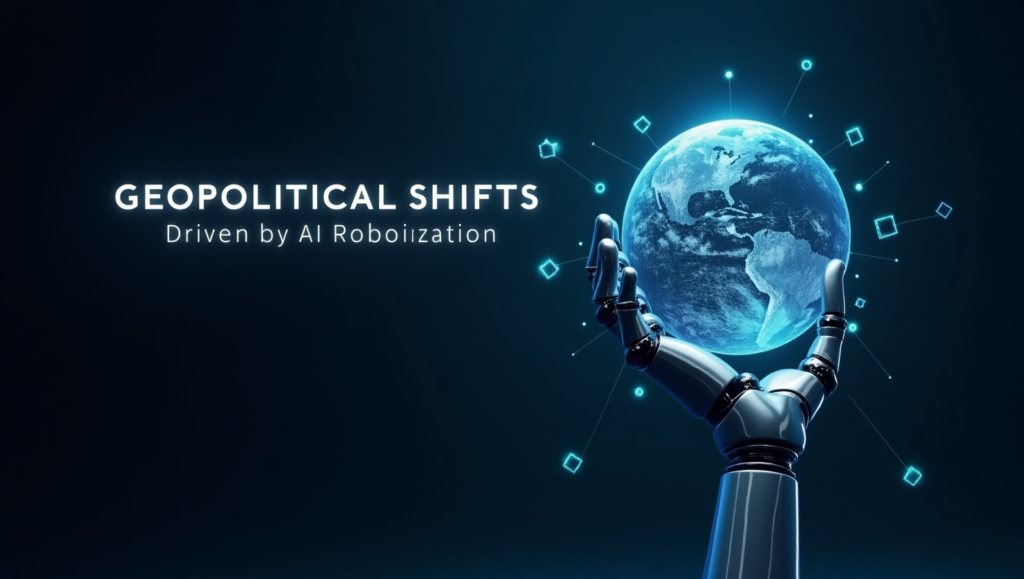
Global technology supply chains and the impact of AI-driven automation
The global technology force chain a sprawling network of manufacturers, suppliers, logistics providers, and distributors is the backbone of the moment’s digital frugality. From semiconductors to smartphones, its elaborate trap ensures that inventions reach consumers worldwide. still, the ascent of AI-driven robotization is reshaping this ecosystem, introducing unknown edges, expostulations, and geopolitical counteraccusations.
As diligence blood to borrow exceptional systems, the question arises How is AI transubstantiating global tech force progressions, and what does this mean for companies, employees, and husbandry?
AI’s part in Revolutionizing Supply Chains

1. Meliorated Precision in Manufacturing
AI-powered robotics and engine literacy algorithms are optimizing product lines. Manufactories now work with AI to
- Prognosticate outfit failures( prophetic conservation), reducing time-out.
- Ameliorate quality control through computer unreality systems that describe blights in real-time.
- Automate daedal assembly processes, especially in semiconductor fabrication and electronics manufacturing.
For illustration, companies like TSMC and Samsung exercise AI to cover chip products, icing nanometer-position perfection while minimizing waste.
2. Smarter force and Demand soothsaying
AI analyzes vast datasets — from request trends to rainfall patterns — to prognosticate demand oscillations. Retail titans like Amazon and Alibaba employ AI to
- Optimize storehouse sock.
- Automate reordering processes.
- Reduce overstocking or dearths, cutting charges by over 30 in some spots.
3. Autonomous Logistics and Delivery
Self-driving exchanges, drone deliveries, and AI-played shipping rows are streamlining logistics. Companies like Maersk and DHL exercise AI to
- Track shipments in real-time.
- stoutly reroute weight to shake detainments.
- Reduce energy consumption and carbon copy vestiges.
The Geopolitical Shifts Driven by AI Robotization

As countries and pots inoculate in AI, force progressions are getting both more flexible and more fractured
- Reshoring and Nearshoring To reduce reliance on overseas manufacturing( e.g., China), nations like the U.S. and Germany are utilizing AI to automate original manufactories, making domestic products cost-operative.
- AI Talent Wars countries are contending for AI experts, with India, the U.S., and China leading in gift accession.
- Semiconductor Sovereignty AI’s belly for improved chips has boosted sweat to make domestic semiconductor ecosystems, as discerned in the EU’s Chips Act and U.S. CHIPS and Science Act.
Expostulations and Ethical Dilemmas
1. Job relegation vs. Upskilling
While AI boosts productivity, it threatens low-professed places in assembly and logistics. The World Economic Forum estimates that 85 million jobs could vanish by 2025, but 97 million new places may crop up in AI management, data dissection, and robotics conservation. Bridging this gap requires global investment in STEM instruction and vocational training.
2. Data sequestration and screen pitfalls
AI relies on massive data flows, raising enterprises about breaches and abuse. Supply chain raids like the 2020 SolarWinds hack highlight susceptibility in connected systems.
3. Environmental Charges
AI data centers and automated manufactories consume enormous dynamism. Without sustainable practices, robotization could complicate carbon copy emigrations, fighting its effectiveness and earnings.
The unborn cooperative and Adaptive force progressions
To thrive in the AI period, companies must
- Unite across boundaries Partake AI-driven perceptivity to alleviate dislocations( e.g., epidemic-convinced deaths).
- Prioritize ethical AI to ensure translucency in automated opinions and cover labor birthrights.
- Invest in verdant AI Use robotization to optimize renewable dynamism operation and indirect force progressions.
Conclusion
AI-driven robotization is no way longer a futuristic conception it’s rewriting the regulations of global technology force progressions. While it promises effectiveness, dexterity, and invention, its success hinges on balancing profitable earnings with mortal-centric programs and environmental administration. As countries and pots navigate this metamorphosis, one verity becomes clear The future of force progressions lies not in replacing humans, but in empowering them through exceptional collaboration.
What’s your take? Will AI-driven force progressions produce a further indifferent global frugality, or consolidate being different? Allow us to see in the commentary! 🌍 ⚙️





